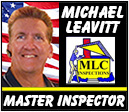 Vermiculite is another fear mongering “Buzz Word” in the real estate industry that has been drawing lots of attention. Vermiculite is another fear mongering “Buzz Word” in the real estate industry that has been drawing lots of attention.
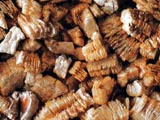 |
| Vermiculite insulation |
From what I can tell, the fear is being driven by the lawyers and the clean-up companies, both of which stand to make a lot of money in the cleanup process. I don’t buy into the hysteria. Instead, I think that a balanced and rational approach should be used when a home’s attic and walls have been identified as containing vermiculite insulation. If you are wondering where the truth resides, then I encourage you to enjoy this information filled page where I have collected some of the best information and over 60 links to even more vermiculite information. |
|
PAGE SECTIONS - The following links will take you to sections further down this same page.
BACK TO TOP
|
| MICHAEL LEAVITT VERMICULITE Q&A’s |
|
Does vermiculite contain asbestos? Absolutely.
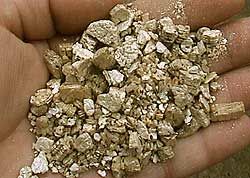 |
|
Vermiculite insulation
|
Isn’t asbestos hazardous? Yes. When you disturb the asbestos fibers they become airborne and can be inhaled.
If vermiculite is not disturbed is it a hazard? If the product is not disturbed then it poses a very low risk. The clean-up companies paint a different picture and remember that they stand to make a lot of money to rid the structure of the product. I believe that a homeowner should take some precautions t make certain that the attic and wall airspaces do not intermix with the main interior airspace of the home and then there is no real risk.
Why did they use asbestos in the first place? Asbestos made whatever product it was used in better. The asbestos fibers made products stronger and more durable. In the case of vermiculite, the insulation is a natural product and not an additive.
Should I buy into the vermiculite hysteria? I recommend that a balanced perspective be maintained by everybody involved. Read each article and figure out the bias so that you can glean the truths presented. Personally, I spend much of my time researching building topics and I have become quite adept in identifying the author’s bias and motives.
BACK TO TOP
|
|
RESEARCH IN PROGRESS
|
| This webpage is quite informative, yet the topic can be researched for weeks via the internet. I have studied it quite a bit and have drawn my own conclusions, but I caution you to read the info and place it into your own scales of truth and draw your own conclusions. |
INSULATION CALLED HEALTH RISK
|
Nation & World: Tuesday, August 15, 2000
W.R. Grace insulation called a health risk
by Philip Brasher
The Associated Press
WASHINGTON - Insulation produced from a W.R. Grace mine in Montana is a danger to workers or homeowners who handle it because of the asbestos it contains, federal health officials said.
The Public Health Service has asked the National Institute of Occupational Safety and Health (NIOSH) to "look into the current worker exposures that may be dealing with these products and issue an alert if need be," Aubrey Miller, an official in the health service's Denver region, said yesterday.
Testing of Zonolite-brand insulation and Grace internal documents show that "even minimal handling by workers or residents poses a substantial health risk," the health service said in a recent memorandum to NIOSH.
The risk to homeowners would be small if they leave the insulation alone, said the memo's author, Hugh Sloan, an assistant surgeon general.
"My sense is that homeowners themselves, if that remains undisturbed, shouldn't have any worry," Sloan said.
Recent studies show even casual handling of the insulation can expose workers or homeowners to 150 times the asbestos level considered safe under federal regulations, according to the memo.
The health service and NIOSH are part of the Department of Health and Human Services. A NIOSH official said the agency was reviewing the health service's concerns.
The insulation was used in millions of homes and businesses nationwide.
Officials of Grace, based in Columbia, Md., declined to comment on the memo.
On its Web site, however, the company said the insulation was put primarily in older homes and is seldom used in new construction: "We believe now, as we did during the time we sold the product, that there is no unreasonable risk of injury or illness associated with the presence of this insulation in homes."
Vermiculite from Grace's mine in Libby, Mont., was sold for use in garden products, fireproofing, cement mixtures and more than a dozen other consumer products. The bulk of the ore was heated until it expanded like popcorn and then marketed as Zonolite insulation.
Asbestos, which has been linked to lung cancer and other diseases, is a natural contaminant of vermiculite ore.
The New York Times reported in July that the Environmental Protection Agency was investigating why officials ignored for 18 years a study that showed Grace was using ore laden with asbestos in insulation and other building products.
Copyright © 2002 The Seattle Times Company
BACK TO TOP
|
|
|
Deadly Dust
Reporter: Frédéric Zalac
February 7, 2003
U.S.-based W.R. Grace produced Zonolite, a popular insulating material used in thousands of Canadian homes. Zonolite is the trademarked name for a product made from the mineral vermiculite.
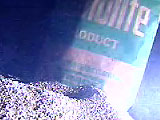 |
| Zonolite Advertisement |
Vermiculite was called the miracle mineral... once heated, it expanded and was used for potting soil, fireproofing and home insulation. It was a very popular product from the 50's to the late 70's.
The company says there's nothing to worry about.
 |
| Vermiculite |
Even though vermiculite by itself is harmless, the deposit in Libby, Montana, just across the border from British Columbia, was naturally contaminated with tremolite... an extremely carcinogenic form of asbestos.
The Libby mine was once the most important source of vermiculite in the world. But the mine has been closed since 1990. The site has been condemned. For decades mine workers were exposed to the asbestos dust, especially in the mill, where workers say they often worked in a cloudy haze of airborne particles. The mill spat out more than two tons of asbestos every day.
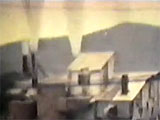 |
Toxic smoke from the
old Libby mine mill |
The company provided dust masks but the employees didn't use them because they would clog up within minutes. Grace also installed several ventilators in response to requests from the state government.
The company's spokesman in Libby refused to answer our questions about workers' exposure to asbestos.
Grace headquarters in Maryland also refused to respond. But over the phone, a spokesman did say that the dangers of asbestos weren't well known before the 1970s. And yet, a confidential memo to the president of the company dated 1969 says "Tremolite asbestos is a definite health hazard". Grace had more proof that the asbestos was making their workers sick. During the 1960s the company regularly x-rayed its employees, and found that more than 90 percent of their long term employees had lung disease.
"They were warned by the Montana health department in the 60's. There were astronomical levels of asbestos. There were areas in the dry mill that had levels of asbestos fibres that you could develop asbestosis within a couple of weeks of exposure."
-lung specialist Dr. Alan Whitehouse
Perley Vatland, who worked at the mill, died from asbestosis. He had thought heart trouble was the cause of his ill health. But it wasn't until he consulted doctors outside the town of Libby that he learned the truth.
 |
Gayla Benefield,
daughter of Perley Vatland |
"He was full of asbestos," says his daughter Gayla, "his heart was enlarged because of the nitro he had taken and the strain on his heart but his heart was not the problem. He simply had no lungs. And he was 61 at the time. He lived until he was 62."
Even more troubling: hundreds of the victims had no contact with the mine or its employees. They became sick just living in Libby. There was asbestos dust even on the local high school track. In fact, secret tests conducted by Grace in the early 1980s found the risk of contamination was extremely high for the young athletes.
But the deadly dust from Montana did not stay south of the border: it crossed into at least six provinces in Canada.
|
DOCUMENT SENT TO W.R. GRACE FROM VANCOUVER-BASED GRANT INDUSTRIES (DECEMBER 10, 1968)
|
"There is asbestos in the ore we receive from Libby.
I'm afraid that we may still be exposing our employees to an unnecessary health hazard.
I want to urge you to put someone on this subject before we get closed down or slapped with some pretty large claims from employees or the heirs. It won't take many more biopsy reports before we get fingered."
|
F. Hyde and Company in Montreal was processing Zonolite from Grace. In Ontario, processing plants were set up in St. Thomas, Ajax and Toronto. In the west, Grant Industries operated plants in Winnipeg, Regina, Edmonton, Calgary, and Vancouver.
"This was shipped to sixty main processing plants across the U.S. and Canada," says Paul Peronard of the U.S. Environmental Protection Agency, "to a total of 240 locations that, at a minimum, you have to investigate. Is there material there? What is left behind? All of a sudden, the scope emanating from Libby is huge."
 |
Herbert Buchwald, former
Alberta health inspector |
The first signs of trouble with Montana vermiculite in Canada appeared as early as the mid-1960s. In 1964, Herbert Buchwald inspected the Zonolite plant in Calgary for the Alberta Department of Public Health. "What was noticeable of course was the amount of dust in the air, particularly during the bagging process," he says, "and the workers were not wearing any respiratory protection." His study showed seven out of nine workers had respiratory problems.
The danger isn't limited to the processing plants. There was still asbestos in the insulating end product eventually sold to consumers. And even though it hasn't been sold since 1984, Zonolite Insulation is still in the attics of thousands of Canadian homes.
The insulation was easy to use. Consumers could install it themselves... just open a bag and pour it out. But the instructions never recommended the use of face masks. And there was no indication that the product contained asbestos.
"...no evidence of any adverse effects of our products on consumers...neither can we offer convincing evidence that they are absolutely safe."
-W.R. Grace confidential document
Documents show the Grace company decided not to alarm its customers, even though it had received a stern warning from the operator of the plants in western Canada, Grant Industries.
In a document marked Personal and Confidential in 1977 the company said there was "no evidence of any adverse effects of our products on consumers". But it goes on to say "neither can we offer convincing evidence that they are absolutely safe." Grace believed that putting labels on the product would "result in substantial sales losses", and they considered it unlikely that consumers could prove that they had been harmed by exposure to Zonolite.
 |
Paul Peronard, U.S.
Environmental Protection Agency |
In the United States, the EPA also conducted tests. It wanted to evaluate the risk of exposure in homes. "Every time we did anything that disturbed the insulation," says Peronard, "whether it was simply storing boxes or something as aggressive as putting a ceiling fan or cutting a hole, we got all sort of airborne fibers, not only in the attic space but spread to the rest of the house."
"Nobody really knows for sure whether this is going to be a severe medical hazard at this point or not," says Dr. Whitehouse, "it's going to be a while before it's found out." So the risk to consumer health is not well-known. But while waiting for definitive results, the EPA recommends that homeowners be very careful.
"If there is no reason to disturb it, don't. If it is butted away, stay away from it. If you have to do something, remodeling, plumbing, rewiring work, you should treat it as asbestos containing material," says Paul Peronard from the EPA.
Health Canada doesn't think it's necessary to warn homeowners because they recommend consulting professionals before renovating. The problem is that most professionals have no idea there's asbestos in Zonolite.
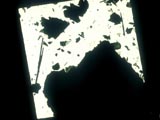
An electron microscope sample of Zonolite from barracks at Shilo military base in Manitoba. The sharp, needle-like fibres are asbestos |
In Ontario and Quebec, as in many other provinces, there's no health warning about old Zonolite insulation. A reference used both in Quebec and Manitoba is the Quebec's Worker's Compensation Board, (CSST) Toxicology Index. The entry for Zonolite now clearly mentions the risks of asbestos tremolite contamination. But this notice was added to the index only hours before our interview with a CSST official.
And yet, the CSST knew about the asbestos problem at Grace's Montana mine since the late 80's. The Zonolite entry that existed prior to our interview shows no mention of asbestos. It may be just an oversight but the CSST knew about the risks and failed to issue a warning for more than twelve years.
W.R. Grace is now facing a flood of lawsuits related to its products that contained asbestos. The company filed for bankruptcy protection in 2001.
BACK TO TOP
|
VERMICULITE Q&A’s - CANADIAN PERSPECTIVE
|
 |
| Vermiculite insulation |
Q and A’s
More information about vermiculite
What is vermiculite?
Vermiculite is a volcanic material compound that expands when it is heated and has the unusual property of expanding into worm-like or accordion-like pieces. They are usually the size of a nickel or dime. Vermiculite has been used in various industries for more than 80 years. It is used in the construction, agricultural, horticultural and industrial markets.
Where are vermiculite reserves?
Vermiculite is found throughout the world. Countries that hold commercial vermiculite mines include Australia, Brazil, Kenya, South Africa, Zimbabwe and the United States. The vermiculite commercially available today comes from deposits that are not considered harmful.
What brand of vermiculite is dangerous?
More than 70 per cent of the vermiculite ore mined in the world came from the Libby mine, which has been closed since 1990. This particular mine was unusual because the area also included a natural deposit of tremolite asbestos. As a result, much of the vermiculite from the Libby mine was contaminated with tremolite asbestos. According to experts, it's a very toxic form of asbestos, 10 times as carcinogenic as the more prevalent chrysotile asbestos. That vermiculite was sold under the brand name Zonolite Attic Insulation.
How is W.R. Grace Co. involved in this issue?
W.R. Grace bought the vermiculite mine in Libby in 1963 from the Zonolite Company. More than 1.5 billion pounds of raw contaminated ore was sent to processing plants across Canada. From a third to a half of the vermiculite from this mine was sold as attic insulation from the 1940s until 1984, when its sale by the company was discontinued.
Was Zonolite widely used?
According to documents from the U.S. Environmental Protection Agency (EPA), between 15 and 35 million U.S. homes and businesses were insulated with Zonolite. Documents show about one tenth of the production from Libby was shipped to Canada. It was even on the list of eligible materials for the federal government's Canadian Home Insulation Program (CHIP), a program that offered grants to homeowners from 1977 to the mid-1980s.
What if I have Zonolite insulation?
Stay away from it. If it's left untouched in the attic, there should be minimal or no risk at all. The asbestos fibres must be airborne to be inhaled. Each time you breathe asbestos fibres into your lungs, you increase the chance of developing health problems.
The fibres can become trapped in the lungs and can cause lung cancer and mesothelioma, a cancer of the lungs' lining. The risk is linked to exposure. It becomes risky is when you have activities that bring you up in the attic, like storing boxes, anything that disturb the material will cause airborne fibres almost immediately.
According to the U.S. EPA, there are cases of individuals who got asbestosis from four or five significant contacts with the insulation material. Tradesman face a higher risk.
What if I'm renovating?
If you are doing work in the attic yourself, such as remodeling, plumbing or rewiring, you should treat Zonolite as asbestos-containing material. You should wear a proper respirator and change your clothes. You have to make sure the fibres won't spread it to other areas of your home. It is recommended to hire a contractor who is properly equipped to work with asbestos.
What should I do if I think I have Zonolite in my attic?
Do not let children play in the area. Do not sweep the Zonolite or use a normal vacuum cleaner. This will re-circulate the dangerous fibres, which could linger in the air for days. There are vacuum cleaners on the market that come with highly sensitive HEPA filters that will capture the fibres.
My home insulation looks like vermiculite. How do I know it’s Zonolite from Libby?
It's impossible to tell just by looking at it. Often, empty Zonolite kraft paper bags were left in the attic. If the bags show that ore was processed by WR Grace Canada, Grant Industries or F. Hyde and Co, the product is probably from Libby and is likely contaminated. If you know you have vermiculite insulation in your attic or walls and you're concerned about it, it probably makes sense to test the material to see if it contains asbestos.
Can I test the material myself?
If you want to have a sample analyzed, it is suggested that you hire a trained consultant or contractor to collect the sample and get it analyzed at a laboratory. There are numerous consulting companies that perform this kind of asbestos analysis work.
According to Bruce Stewart from Pinchin Environmental in Mississauga, there should be several samples taken since asbestos concentration may vary from one vermiculite piece to another. Also, specialized consultants should be looking for traces of asbestos, even below 0.1 per cent on a weight-to-weight basis. Normally a concentration of less than 0.1 per cent is considered safe. But vermiculite is extremely friable and can release a very high number of asbestos fibres in the air when disturbed even if the concentration of asbestos is considered very low.
If there is asbestos in the insulation, should I have it removed?
Before taking that step, homeowners should consider a number of factors. First, removing asbestos-containing materials is typically very expensive. If a significant amount of material is involved, it will probably costs thousands of dollars.
Secondly, due to the physical characteristics of vermiculite, there's a low potential the material is getting into the air. If the insulation is not exposed to the home environment (for example, it's sealed behind wallboards and floorboards or is isolated in the attic which is vented outside) the best advice would be to leave it alone.
But if you have a house that needs to be renovated or you use the attic, you expose yourself every time you go up there and risk spreading it to the rest of your house. In those circumstances you are better off removing it says the U.S. EPA. To avoid conflict of interest, have the insulation tested by one firm and removed by another. Carefully check the credentials of those you hire.
What do Canadian health authorities have to say?
Health Canada has not issued any guidelines or warnings to homeowners about this product yet. There are no official online Canadian sources about Zonolite, except for a short entry in Quebec Worker's compensation board (CSST) toxicology database.
Sources: U.S. Environmental Protection Agency, Pinchin Environmental, St. Louis Post-Dispatch, Radio-Canada
LINK TO ORIGINAL ARTICLE
BACK TO TOP
|
|
|
Asbestos contamination in vermiculite and vermiculite products has become a national concern to a variety of federal agencies (EPA, OSHA, CPSC and ATSDR) and to many private citizens throughout the country. A tremendous amount of information has been made available to the public via print, television/radio and the Internet. EPA's vermiculite pages provides users with basic information about Vermiculite and its uses, factsheets, Question and Answer documents, reports and links to EPA Regional vermiculite pages. Other relevant information, not included here, may be available from federal, state and local governments, industry, trade associations and international sources.
Vermiculite and Its Uses
What is Vermiculite? Vermiculite is the mineralogical name given to hydrated laminar magnesium-aluminum-ironsilicate which resembles mica in appearance. All vermiculite ores contain a range of other minerals that were formed along with the vermiculite in the rock. Vermiculite ores from some sources have been found to contain asbestos minerals but asbestos is not intrinsic to vermiculite and only a few ore bodies have been found to contain more than tiny trace amounts.
Vermiculite mines are surface operations where ore is separated from other minerals, and then screened or classified into several basic particle sizes. Vermiculite is found in various parts of the world. Locations of the predominant commercial mines are in Australia, Brazil, China, Kenya, South Africa, USA and Zimbabwe.
When subjected to heat, vermiculite has the unusual property of exfoliating or expanding into worm-like pieces (the name vermiculite is derived from the Latin 'vermiculare' - to breed worms). This characteristic of exfoliation, the basis for commercial use of the mineral, is the result of the mechanical separation of the layers by the rapid conversion of contained water to steam. The increase in bulk volume of commercial grades is 8 to 12 times, but individual flakes may exfoliate as many as 30 times. There is a color change during expansion that is dependent upon the composition of the vermiculite and furnace temperature.
How Is Vermiculite Used? Vermiculite has been used in various industries for over 80 years. It is used in the construction, agricultural, horticultural and industrial markets.
Generic Applications -
| Loose Fill |
Carriers |
| Lightweight Aggregates |
Soil Conditioners |
| Asbestos Substitutions |
Density Modifiers |
| Absorbents |
Fire Protection |
| Industrial Heat Insulation |
|
Specific Applications -
CONSTRUCTION
| Acoustic Finishes |
Gypsum Plaster |
| Air Setting Binder Board |
Loft Insulation
|
| Fire Protection (internal/external) |
Sound Deadening Compounds |
| Floor and Roof Screed (lightweight insulating concrete) |
|
AGRICULTURAL
| Animal Feed |
Pesticides |
| Anti-caking Material |
Seed Encapsulant |
| Bulking Agent |
Soil Conditioner |
| Fertilizer |
|
HORTICULTURAL
| Blocking Mixes |
Seed Germination |
| Hydroponics |
Seedling Wedge Mix |
| Micro-propagation |
Sowing Composts |
| Potting Mixes |
Twin Scaling Bulbs |
| Root Cuttings |
|
INDUSTRIAL
| Absorbent Packing |
Insulation Blocks and Shapes |
| Brake Pads and Brake Shoes |
Insulation - High and Low Temperature |
| Castables |
Molten Metal Insulation |
| Dispersions |
Molded Products |
| Drilling Muds |
Nuclear Waste Disposal |
| Filtration |
Paints |
| Fireproof Safes |
Perfume Absorbent |
| Fixation of Hazardous Materials |
Sealants |
| Furnaces |
|
MORE EPA LINKS
BACK TO TOP
|
|
|
A town left to die
Tiny Libby, Mont., depended for years on the jobs at a vermiculite mine. But the mine is closed now, and a P-I investigation shows the town is paying a tragic price for those jobs. Hundreds of former miners, their wives and children, and other townspeople have either died or been diagnosed with fatal illness from asbestos the mine released into the air. No one stepped in to stop the dying. Now the town wonders when it will end, and if the town's children are still at risk.
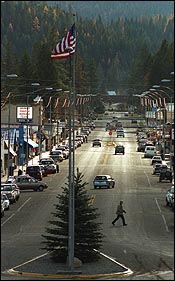 |
|
| A U.S. flag flies over Libby's main street. |
|
Hundreds are dead or dying
Asbestos from a now-closed vermiculite mine on a mountain near Libby has killed 192 people and left at least 375 with fatal diseases. Doctors say the people of Libby will keep dying for decades. (Nov. 18, 1999)
It all started with the search for gold
Prospectors first put pick and shovel to Zonolite Mountain 119 years ago. Many mining-claim records are missing or illegible, but what is known is that almost 80 percent of the world's vermiculite came from Libby. (Nov. 18, 1999)
While people are dying, government agencies pass buck
Everyone seems to agree someone needs to do do something about the hundreds of people from Libby who have either died or been diagnosed with fatal diseases after being exposed to tremolite asbestos from a vermiculite mine. But every official and every agency has a reason why, so far, they have not been that somebody. (Nov. 19. 1999)
'No one ever told us that stuff could kill you'
Darlene Joy Riley called her cancer "George." Last year, George killed her. The story of one woman who didn't work at W.R. Grace's vermiculite mine but died after getting asbestos fibers in her lungs. (Nov. 19, 1999)
BACK TO TOP
|
|
|
|
The Seattle Post Intelligencer is to be praised for their following list of articles regarding asbestos. You can spend hours reading this informative information. I encourage you to visit their website and view their archive.
- The History of W.R. Grace Co. (Nov. 18, 1999)
- Libby's lost miners: A gallery of eight who died (Nov. 19, 1999)
- Group organizes to help victims (Nov. 19, 1999)
- Authorities sending teams to Montana mining town (Nov. 22, 1999)
- Montana's governor knows asbestos danger (Nov. 25, 1999)
- Finally, Libby asbestos victims have their say (Dec. 3, 1999)
- Initial tests reveal areas of asbestos in and around Libby (Dec. 3, 1999)
- Deadly ore was shipped around U.S., Canada (Dec. 22, 1999)
- Just 23 months hauling ore -- dead 36 years later (Dec. 22, 1999)
- Asbestos study is expanded nationwide (Jan. 18, 2000)
- Grace to pick up medical bills in tainted town (Jan. 22, 2000)
- Immediate cleanup sought in mining town (Feb. 2, 2000)
- Company blocked OSHA's efforts to establish exposure standards (Feb. 12, 2000)
- Far from Libby, Montanans fight asbestos measure (March 2, 2000)
- Mine-safety agency takes action (March 17, 2000)
- Grace backs off pledge to clean up asbestos (April 27, 2000)
- W.R. Grace buys its old Libby mine, then bans EPA investigators from it (July 24, 2000)
- EPA asks: Why did dying miners get no help? (Aug. 18, 2000)
- Labor Dept. enters Libby's asbestos fight (Aug. 21, 2000)
- EPA sues for access to Libby vermiculite mine (Sept. 15, 2000)
- Exposure in Libby blamed for high rate of lung disease (Feb. 23, 2001)
- Asbestos confusion exposing millions (Feb. 28, 2001)
- By any name, asbestos is still a killer (Feb. 28, 2001)
- Murray seeks asbestos hearings (April 2, 2001)
- W.R. Grace files for bankruptcy (April 3, 2001)
- Up to 30% tested in Libby hurt by asbestos (August 24, 2001)
- Asbestos victims feel betrayed (May 16, 2002)
|
NATIONWIDE WARNING - ASBESTOS
|
Nationwide Warning On Asbestos In Insulation
Aug. 14, 2000
WASHINGTON, D.C. - Don't disturb the insulation in the attic or walls of your home unless you're certain it does not contain vermiculite.
That was the clear message Monday after federal health officials warned that insulation that was produced from a W.R. Grace & Co. mine in Montana is a danger to workers or homeowners who handle it because of the asbestos it contains.
The Public Health Service has asked the National Institute of Occupational Safety and Health to "look into the current worker exposures that may be dealing with these products and issue an alert if need be," said Aubrey K. Miller, an official in the health service's Denver region.
Testing of Zonolite-brand insulation, along with Grace internal documents, shows that "even minimal handling by workers or residents poses a substantial health risk," the health service said in a recent memorandum to NIOSH.
In Washington state, some 53,000 homes may have the dangerous insulation.
Leave It Alone!
The risk to homeowners would be small if they leave the insulation alone, said the memo's author, Hugh Sloan, an assistant surgeon general.
"My sense is that homeowners themselves, if that remains undisturbed, shouldn't have any worry," Sloan said.
The insulation was used in millions of homes and businesses nationwide.
Manchester resident Robert Parks, 73, installed Zonolite insulation in his home 30 years ago -- and now has the lung disease asbestosis.
"I'm getting shorter of breath all the time, and specially if I take walks and I walk too fast or something like that," he says.
Company Knew, Newspaper Says
A copyrighted article in the Seattle Post-Intelligencer Monday said the Grace company knew in the mid-'70s there was asbestos in Zonolite. The P-I said the company decided against warning consumers, afraid it would hurt sales.
In a statement on its Web site, the Grace company said the insulation was primarily put in older homes and seldom used in new construction.
"We believe now, as we did during the time we sold the product, that there is no unreasonable risk of injury or illness associated with the presence of this insulation in homes," the statement said.
BACK TO TOP
|
|
|
Vermiculite is brownish, tan pellets about 1/16" - 1/8" with a somewhat shiny irregular surface. It is sort of like a small squarish shaped crystal. It is very soft. It was (and probably still is) used as an additive to potting soils. It was widely sold in garden centers. I've heard that there are other colors, but I've never seen them.
I have seen it installed in attics as insulation once or twice. It was commonly poured into cavities of concrete block walls for insulation.
Todd Foster - Kansas City, Kansas
Mark, in Libby, Montana the location of the Grace Vermiculite Mine, the E.P.A. has been investigating deaths associated to the mining of Vermiculite, as it contains asbestos.
I can see vermiculite in any home in my area that is between 1920 thru about 1970. It was sold in bags, and I often see the bags in the attic. This product shines, is flaky,and breaks up quickly and turns to a powder when you squeeze it between your hand. USE CAUTION!
Another reason to always wear good quality respirator when in an attic. I use "Due to the age of the home , this home may have "Asbestos Containing Materials" we recommend further evaluation by a State Certified Asbestos Inspector.
Bill Schwahn - Bridger View Inspections - www.montanainspector.com
BACK TO TOP
|
ASBESTOS INSULATION BLAMED FOR CANCER
|
LINK TO ORIGINAL ARTICLE
This article was shared by Dave Bottoms. Dave is a fellow home inspector from Canada.
WINNIPEG.CBC.CA News
Asbestos insulation blamed for cancer on reserves
Last Updated: Apr 1 2004 03:07 PM CST
WINNIPEG - Members of the Poplar River First Nation say the federal government is not taking care of people who get cancer from the insulation used in many homes on native reserves.
Two of Raven Thundersky's sisters have died of a rare form of asbestos-related cancer called mesothelioma. Her mother and another sister have also been diagnosed with the disease and are undergoing chemotherapy.
All of them lived for years in the same house with Thundersky on the Poplar River First Nation, on the east side of Lake Winnipeg.
Thundersky says Health Canada has confirmed her home was built with asbestos-laced vermiculite insulation, also known as "Zonolite." She wants the federal government test the people who lived in homes made with the material and provide compensation to everyone who gets cancer as a result.
"I think it would've brought a lot of comfort knowing there was somebody there helping us try to get through this, rather than us being left to die and being left to deal with it on our own with absolutely no resources. That's been very, very hard on the family," she says.
"The fact that my sisters died, the fact that it fell on deaf ears and the fact that nobody did anything about it, that's my biggest motivator right now. The day I'm quiet about this is the day I'm six feet under."
Poplar River Chief Russell Lambert says cancer rates are high on the reserve, but the federal government has already rejected two proposals for an environmental review.
"They should do an inventory of what kind of material was used when they started constructing the houses back in the late 50s, early 60s, to see what kind of insulation was used," he says. "The First Nations would be in line for some sort of compensation package for those families suffering from this rare disease, or this rare cancer."
• No health risk unless disturbed •
Hugh Ryan, manager of housing for Indian and Norther Affairs, says he can't comment on those requests, but says the department is going through files dating from the 1960s to see if, when, and where vermiculate insulation containing asbestos may have been used. He hopes to have some answers within six weeks.
"We're going to do everything reasonable to ensure we know ourselves the extent of the problem in First Nation communities, making sure the health of residents is protected," he says.
Health Canada says it first heard of problems with Zonolite insulation one year ago. Officials say it came from an American mine that contained asbestos.
"Vermiculite ore from that mine did come into Canada, but all vermiculite-based products, in terms of insulation, are really only in about less than two per cent of Canadian homes," says Paul Glover, director general of the safe environments program.
Glover says the product hasn't been sold in Canada for 10 years. He says there's no health risk unless the insulation is disturbed.
The U.S. Environmental Protection Agency in the United States issued guidelines on handling the substance last year. Health Canada is preparing to release guidelines explaining how Canadians can protect themselves from asbestos-laced vermiculite insulation.
|
WISCONSIN DEPT. OF HEALTH Q&A’s
|
Vermiculite Insulation
What is vermiculite?
Vermiculite is a naturally occurring mineral used in construction, insulation and gardening products. It looks like shiny, small pieces of popcorn. Vermiculite came from mines in Libby, Montana (closed in 1990) as well as other mines in the U.S. and other countries. Vermiculite is still mined and distributed for a number of uses, including insulation.
Why should I be concerned about vermiculite insulation?
Much of the Libby vermiculite was used as attic insulation. It was sold from 1963 to 1984 under the product name Zonolite. The Environmental Protection Agency (EPA) estimated in 1985 that 940,000 American homes contained, or had contained, Zonolite attic insulation.
Over 70% of vermiculite ore mined in the world came from Libby. The ore from this mine also included a natural deposit of amphibole asbestos. Unfortunately, much of the vermiculite from Libby was contaminated with amphibole/tremolite asbestos. The asbestos fibers are invisible to the eye and can only be professionally detected. Homeowners should consider the following:
- Vermiculite used for residential insulation may contain asbestos.
- If you are unsure whether the insulation in your home contains vermiculite, avoid disturbing it until either you or a professional can confirm that it is vermiculite.
- Use personal protection (see other side) when doing minor home projects; seek professional advice for large projects.
If I have vermiculite insulation in my home, how can it be tested?
If you have vermiculite insulation, it can be tested for asbestos. You can hire a certified asbestos inspector (call the Division of Public Health Asbestos and Lead Section for information about contractors and labs (608) 261-6876), or collect the sample yourself. If you collect the sample yourself, follow these precautions:
- A teaspoon is a good tool to collect a small sample. Put one teaspoon sized sample into a small plastic container with a tight fitting lid (e.g. 35 mm film canister).
- Wear a HEPA respirator (available at most major home improvement stores, dust masks are not sufficient). Use a spray bottle to dampen the sample area.
- Disturb the material as little as possible; only a small amount is needed for analysis.
- Wash your hands and wipe the outside of the container off with a wet disposable towel.
- Include your name, address and telephone number when mailing your sample. Indicate you want the sample analyzed for asbestos.
What if the insulation is found to contain asbestos?
There are several factors to consider in planning your response. For example, how much asbestos was found in the sample, the amount and extent of vermiculite insulation installed in the house, and how accessible is it. You may also consider testing the indoor air of your home to determine if asbestos is being released into your living area.
If asbestos is found, should it be removed?
Homeowners may wish to consider the following points:
- First, due to the physical characteristics of vermiculite and where it may be installed, the potential for contamination of the air throughout your home may be low.
- Second, if the insulation will not be disturbed and is not contaminating the home environment (e.g. it’s sealed behind tight walls, floors, or isolated in an unfinished attic, which is vented outside) it may be best to leave it alone. Furthermore, signs should be posted inside the attic saying "Cancer Hazard: Insulation contains asbestos, do not disturb or create dust."
- Last, if home renovations involve removal of walls or where vermiculite insulation is located, extra precaution is necessary and removal prior to renovation may be warranted.
What can I do to prevent asbestos exposure?
The following steps can help minimize asbestos exposure during very minor home renovations (such as installing a ceiling light, bathroom fan, or computer cable):
- Wear gloves, eye protection and a HEPA respirator (not just a dust mask).
- Tape off rooms with plastic sheeting to prevent contaminating other areas of a home; keep the vermiculite damp to prevent spreading dust.
- Keep windows open for good ventilation and wipe up all dust and debris using wet cleaning methods (wet-wiping and wet mopping).
- Do not use a home/shop vacuum to clean up dust or debris.
- If renovations involve extensive removal or exposure to asbestos containing insulation, it’s best to hire a professional, state-certified asbestos removal contractor.
What are the asbestos health risks?
Asbestos fibers must be breathed in to cause disease. Disturbing vermiculite insulation or dust containing asbestos will result in exposure unless precautions are taken. The health risks vary, depending on the amount and frequency of exposure.
Those at highest risk would be long-term vermiculite processing plant employees or workers regularly installing or handling in-place vermiculite products without lung protection. Those at lower risk include people who occasionally disturbed attic insulation during activity in the attic or when doing minor "handyman" jobs. The lowest risk would be for people who live in a home where the vermiculite insulation is isolated and they have had no direct contact with the materials.
Asbestos-exposed workers, family members, and those living in the neighborhoods of asbestos plants have developed a rare type of lung cancer known as mesothelioma. Asbestos can also cause permanent lung damage known as asbestosis, which causes shortness of breath and increases the risk of serious lung infections.
For more information
Contact your local public health agency, or the Wisconsin Division of Public Health (DPH), for health related questions (608) 266-1120; for a list of state-certified contractors, consultants and labs, call the DPH Asbestos and Lead section, (608) 261-6876.
Also contact the Environmental Protection Agency (EPA) or the Agency for Toxic Substances and Disease Registry (ATSDR).
PPH 45007 11/2000
Last Revised: January 07, 2003
BACK TO TOP
|
1989 ASBESTOS BAN -NOT A COMPLETE REALITY
|
I was always led to believe that asbestos was banned in residential construction, yet the complete ban ruling was reversed.
Asbestos Ban and Phase Out
On July 12, 1989, EPA issued a final rule banning most asbestos-containing products. In 1991, this regulation was overturned by the Fifth Circuit Court of Appeals in New Orleans. As a result of the Court's decision, the following specific asbestos-containing products remain banned: flooring felt, rollboard, and corrugated, commercial, or specialty paper. In addition, the regulation continues to ban the use of asbestos in products that have not historically contained asbestos, otherwise referred to as "new uses" of asbestos. Below are the four relevant Federal Register notices and a document that provides more detail on the status of EPA's ban on asbestos-containing products.
- Asbestos: Manufacture, Importation, Processing, and Distribution in Commerce Prohibitions; Final Rule (54 FR 29460, July 12, 1989) (FRL-3476-2)
- Asbestos; Manufacture, Importation, Processing and Distribution Prohibitions; Effect of Court Decision; Continuing Restrictions on Certain Asbestos-Containing Products (57 FR 11364, April 2, 1992) (FRL-4044-2)
- Asbestos; Manufacture, Importation, Processing and Distribution Prohibitions; Continuing Restrictions on Certain Asbestos-Containing Products (58 FR 58964, November 5, 1993) (FRL-4635-7)
- Technical Amendment in Response to Court Decision on Asbestos; Manufacture, Importation, Processing and Distribution Prohibitions; Technical Amendment (59 FR 33208, June 28, 1994)
(FRL-4776-7)
- EPA Asbestos Materials Ban (ABPO Rule): Clarification (3 pp, 9.62Kb) - May, 1999
When you look at the articles above, you are left wondering what still is allowed to contain and use asbestos. Here is the answer, and notice that this banning doesn’t just deal with building industry products...
Products not banned - Asbestos-containing product categories no longer subject to the 1989 TSCA ban include: asbestos-cement corrugated sheet, asbestos-cement flat sheet, asbestos clothing, pipeline wrap, roofing felt, vinyl-asbestos floor tile, asbestos-cement shingle, millboard, asbestos-cement pipe, automatic transmission components, clutch facings, friction materials, disc brake pads, drum brake linings, brake blocks, gaskets, non-roofing coatings, and roof coatings.
BACK TO TOP
|
EPA - BEST PRACTICES FOR VERMICULITE - MAY 2003
|
|
Current Best Practices for Vermiculite Attic Insulation - May 2003
The US Environmental Protection Agency (EPA) offices have received a large number of phone calls from citizens concerned about vermiculite insulation in their home that might be contaminated with asbestos. EPA is gathering more information about vermiculite insulation and other products containing vermiculite. If you suspect vermiculite insulation is in your home, the safest thing is to leave the material alone. If you decide to remove or must otherwise disturb the material due to a renovation project, consult with an experienced asbestos contractor. The following information provides a common sense approach to help you find out what kind of insulation is in your home and decide what to do if you have vermiculite insulation.
What is vermiculite insulation?
Vermiculite is a naturally occurring mineral that has the unusual property of expanding into worm-like accordion shaped pieces when heated. The expanded vermiculite is a light-weight, fire-resistant, absorbent, and odorless material. These properties allow vermiculite to be used to make numerous products, including attic insulation.
Photo - Vermiculite Insulation -
Do I have vermiculite insulation?
Vermiculite can be purchased in various forms for various uses. Sizes of vermiculite products range from very fine particles to large (coarse) pieces nearly an inch long. Vermiculite attic insulation is a pebble-like, pour-in product and is usually light-brown or gold in color. The pictures below show several samples of vermiculite attic insulation.
Photo - Different Grades of Vermiculite -
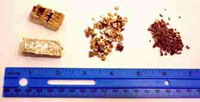
Photo - Close Up of Vermiculite Insulation in an Attic -
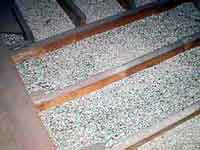
Photo - Attic Containing Vermiculite Insulation -
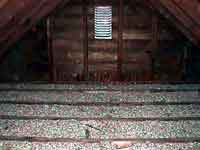
Is vermiculite insulation a problem?
Prior to its close in 1990, much of the world’s supply of vermiculite came from a mine near Libby, Montana. This mine had a natural deposit of asbestos which resulted in the vermiculite being contaminated with asbestos. Attic insulation produced using vermiculite ore, particularly ore that originated from the Libby mine, may contain asbestos fibers. Today, vermiculite is mined at three US Facilities and in other countries which have low levels of contamination in the finished material.
How does asbestos cause health problems?
Asbestos can cause health problems when inhaled into the lungs. If products containing asbestos are disturbed, thin, lightweight asbestos fibers are released into the air. Persons breathing the air may breathe in asbestos fibers. Continued exposure increases the amount of fibers that remain in the lung. Fibers embedded in lung tissue over time may result in lung diseases such as asbestosis, lung cancer, or mesothelioma. Smoking increases your risk of developing illness from asbestos exposure.
What should I do if I have vermiculite attic insulation?
DO NOT DISTURB IT. Any disturbance has the potential to release asbestos fibers into the air. Limiting the number of trips you make to your attic and shortening the length of those trips can help limit your potential exposure. EPA and ATSDR strongly recommend that:
• Vermiculite insulation be left undisturbed in your attic. Due to the uncertainties with existing testing techniques, it is best to assume that the material may contain asbestos.
|
| • You should not store boxes or other items in your attic if retrieving the material will disturb the insulation. |
| • Children should not be allowed to play in an attic with open areas of vermiculite insulation. |
| • If you plan to remodel or conduct renovations that would disturb the vermiculite, hire professionals trained and certified to handle asbestos to safely remove the material. |
| • You should never attempt to remove the insulation yourself. Hire professionals trained and certified to safely remove the material. |
What if I occasionally have to go into my attic?
EPA and ATSDR strongly recommend that homeowners make every effort not to disturb vermiculite insulation in their attics. If you occasionally have to go into your attic, current best practices state you should:
| 1. Make every effort to stay on the floored part of your attic and to not disturb the insulation. |
| 2. If you must perform activities that may disturb the attic insulation such as moving boxes (or other materials), do so as gently as possible to minimize the disturbance. |
| 3. Leave the attic immediately after the disturbance. |
| 4. If you need work done in your attic such as the installation of cable or utility lines, hire trained and certified professionals who can safely do the work. |
| 5. It is possible that vermiculite attic insulation can sift through cracks in the ceiling, around light fixtures, or around ceiling fans. You can prevent this by sealing the cracks and holes that insulation could pass through. |
|
6. Common dust masks are not effective against asbestos fibers. For information on the requirements for wearing a respirator mask, visit the following OSHA website:
http://www.osha-slc.gov/SLTC/respiratoryprotection/index.html
|
What are the next steps?
The guidance provided in this brochure reflects the current testing technology and knowledge of precautions one may take regarding vermiculite attic insulation. EPA is initiating further studies on vermiculite attic insulation and pursuing other asbestos related issues. Additional information will be provided to the public via the EPA and ATSDR web sites and through additional outreach materials as it becomes available.
Is my health at risk from previous exposures to the asbestos in the insulation?
If you removed or disturbed the insulation, it is possible that you inhaled some asbestos fibers. Also the disturbance may have resulted in the fibers being deposited into other areas of the home. Exposure to asbestos increases your risk of developing lung disease. That risk is made worse by smoking. In general, the greater the exposure to asbestos, the greater the chance of developing harmful health effects. Disease symptoms may take several years to develop following exposure. If you are concerned about possible exposure, consult a physician who specializes in lung diseases (pulmonologist). Where can I get information on testing or removal of the insulation? EPA and ATSDR strongly recommend using a trained and certified professional to conduct removal work. Removing the insulation yourself could potentially spread asbestos fibers throughout your home, putting you and your family at risk of inhaling these fibers. For certified asbestos removal professionals in your area, refer to your local Yellow Pages. Your State Environmental Agency can confirm that the company’s credentials are current. You can find your State Agency at: http://www.epa.gov/epahome/whereyoulive.htm. Currently, there are specific technical issues involving vermiculite sampling that can complicate testing for the presence of asbestos fibers and interpreting the risk from exposure. EPA and ATSDR are not recommending at this time that homeowners have vermiculite attic insulation tested for asbestos. As testing techniques are refined, EPA and ATSDR will provide information to the public on the benefits of testing that produce more definitive and accurate test results.
What if I have work-related exposure to vermiculite?
Workers who have had significant past exposure, or have significant ongoing exposure to asbestos, to vermiculite from Libby, or to other asbestos contaminated materials should consider getting a medical exam from a physician who knows about diseases caused by asbestos. For more information and to obtain a fact sheet concerning occupational exposure to vermiculite, contact the National Institute for Occupational Safety and Health (NIOSH) at: 1-800-35-NIOSH, or http://www.cdc.gov/niosh/homepage.html.
Where can I get more information?
Information on the Agency’s guidance on asbestos and vermiculite, including insulation and horticultural products, has previously been available on EPA’s website. Additional information on vermiculite and asbestos is available from the following sources:
General Information
- EPA’s Toxic Substances Control Act (TSCA) Assistance Information Service: Asbestos Line:
1-800-471-7127
- EPA Asbestos Ombudsman: 1-800-368-5888
- EPA's Asbestos Home Page: http://www.epa.gov/asbestos/
Health Information
Worker Safety
Consumer Products
Mineralogy
Prepared by the United States Environmental Protection Agency, National Institute for Occupational Safety and the Agency for Toxic Substances and Disease Registry, May 2003. EPA publication 747-F-03-001
BACK TO TOP
|
|
|
|
|
BACK TO TOP >>>
|